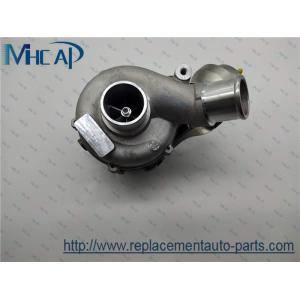
Add to Cart
Auto Parts Turbo Charger Part OEM 1515A170 For MITSUBISHI L200 TRITON
Specification:
Model Number:1515A170
Part Name:turbocharger
Charge Type : Exhaust Turbocharger
Suitable car:MITSUBISHI L200 TRITON
Size: Standard Size
Stocks:Available
Condition: 100% new
Part Fitment:
| MODEL | YEAR | ENIGNE | CC | KW | TYPE |
| MITSUBISHI L 200 / TRITON (KA_T, KB_T) 2.5 DI-D (KA4T) | 2007-2015 | 4D56-HP | 2477 | 123 | Pickup |
| MITSUBISHI L 200 / TRITON (KA_T, KB_T) 2.5 DI-D (KA4T) | 2010-2015 | 4D56 (16V),4D56-HP | 2477 | 94 | Pickup |
| MITSUBISHI L 200 / TRITON (KA_T, KB_T) 2.5 DI-D 4WD (KB4T) | 2005-2015 | 4D56-HP | 2477 | 100 | Pickup |
| MITSUBISHI L 200 / TRITON (KA_T, KB_T) 2.5 DI-D 4WD (KB4T) | 2007-2015 | 4D56-HP | 2477 | 123 | Pickup |
| MITSUBISHI L 200 / TRITON (KA_T, KB_T) 2.5 DI-D 4WD (KB4T) | 2010-2015 | 4D56-HP | 2477 | 131 | Pickup |
What is a turbocharger?
A turbocharger, colloquially known as a turbo, is a turbine-driven, forced induction device that increases an internal combustion engine's efficiency and power output by forcing extra compressed air into the combustion chamber. This improvement over a naturally aspirated engine's power output is because the compressor can force more air—and proportionately more fuel—into the combustion chamber than atmospheric pressure (and for that matter, ram air intakes) alone.
Turbochargers were originally known as turbosuperchargers because all forced induction devices are classified as superchargers. Technically, turbocharges are superchargers, however today, the term "supercharger" is typically applied only to mechanically driven forced induction devices. The key difference between a turbocharger and a conventional supercharger is that a supercharger is mechanically driven by the engine, often through a belt connected to the crankshaft, whereas a turbocharger is powered by a turbine driven by the engine's exhaust gas. Compared with a mechanically driven supercharger, turbochargers tend to be less responsive. Twincharger refers to an engine with both a supercharger and a turbocharger.
Operating principle:
In naturally aspirated piston engines, intake gases are drawn or "pushed" into the engine by atmospheric pressure filling the volumetric void caused by the downward stroke of the piston (which creates a low-pressure area), similar to drawing liquid using a syringe. The amount of air actually inspired, compared with the theoretical amount if the engine could maintain atmospheric pressure, is called volumetric efficiency. The objective of a turbocharger is to improve an engine's volumetric efficiency by increasing density of the intake gas (usually air) allowing more power per engine cycle.
The turbocharger's compressor draws in ambient air and compresses it before it enters into the intake manifold at increased pressure. This results in a greater mass of air entering the cylinders on each intake stroke. The power needed to spin the centrifugal compressor is derived from the kinetic energy of the engine's exhaust gases.
In automotive applications, 'boost' refers to the amount by which intake manifold pressure exceeds atmospheric pressure at sea level. This is representative of the extra air pressure that is achieved over what would be achieved without the forced induction. The level of boost may be shown on a pressure gauge, usually in bar, psi or possibly kPa. The control of turbocharger boost has changed dramatically over the 100-plus years of their use. Modern turbochargers can use wastegates, blow-off valves and variable geometry, as discussed in later sections.
In petrol engine turbocharger applications, boost pressure is limited to keep the entire engine system, including the turbocharger, inside its thermal and mechanical design operating range. Over-boosting an engine frequently causes damage to the engine in a variety of ways including pre-ignition, overheating, and over-stressing the engine's internal hardware. For example, to avoid engine knocking (also known as detonation) and the related physical damage to the engine, the intake manifold pressure must not get too high, thus the pressure at the intake manifold of the engine must be controlled by some means. Opening the wastegate allows the excess energy destined for the turbine to bypass it and pass directly to the exhaust pipe, thus reducing boost pressure. The wastegate can be either controlled manually (frequently seen in aircraft) or by an actuator (in automotive applications, it is often controlled by the engine control unit).
Our sale market:

FAQ:
1.How do your deal with low quality problems product?
If there are any quality problems under warranty,return&repair service will be provided to protect the interests of customers.
2. How to get a quotation?
Please kindly advice the OE number, color, picture, VIN, .etc and send your email to us.
3. Any discount?
Our best price will be offered according to the order quantity, so please tell us your purchase quantity when you inquire.
4. Can you produce according to the samples?
Yes, we can produce by your samples or technical drawings. We can build the molds and fixtures.
Contact us:
Don’t hesitate to contact us if you have any question,it is our pleasure to help you, we will get back to you within 24 hours.